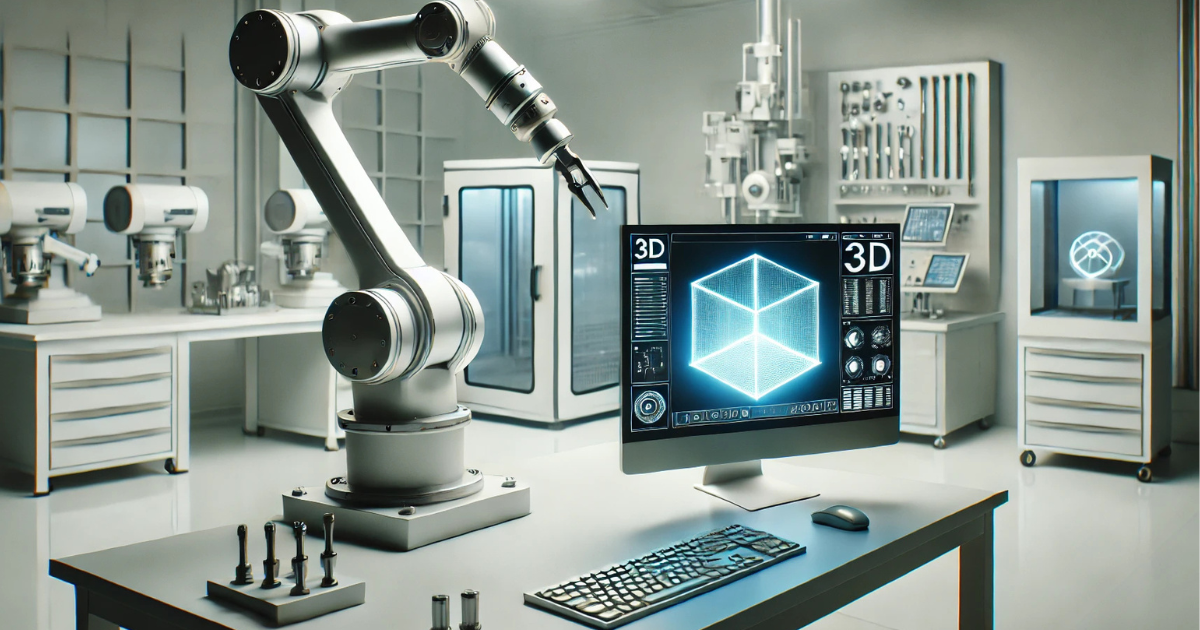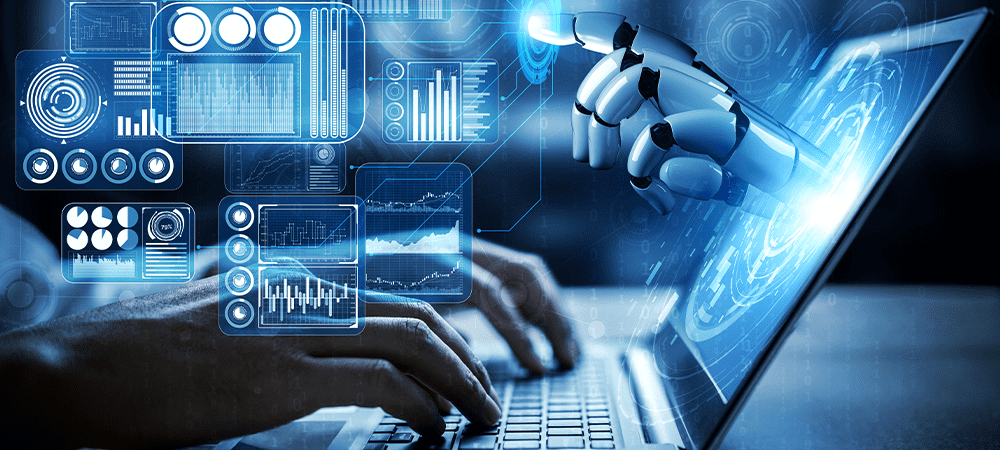The Future of Robotics in Daily Life
Introduction
The future of robotics in daily life promises to revolutionize how we interact with the world around us. As technology evolves at an incredible pace, robots are becoming a vital part of our regular routines. From home automation to healthcare solutions, robotics is likely to enhance our lives in ways we have yet to completely appreciate. This article discusses the potential impact of robotics on our daily routines, work environments, and personal interactions. As we delve into this subject, we will analyse how the future of robotics in daily life will affect our society, economy, and culture.
Understanding Robotics
What is Robotics?
Robotics is a discipline of technology that encompasses the design, manufacture, operation, and usage of robots. These devices can perform activities automatically or semi-autonomously, frequently employing artificial intelligence (AI) to adapt and learn from their surroundings. The future of robotics in daily life rests on producing increasingly intelligent and capable robots that can serve numerous purposes. This includes anything from simple housekeeping activities to sophisticated surgical operations.
The Evolution of Robotics
The adventure of robotics began in the 20th century, but the pace of progress has accelerated rapidly in recent years. Early robots were largely used in industrial settings for monotonous activities. However, as technology evolved, robots began to find uses in numerous industries. Today, we see robots in homes, hospitals, schools, and even on the highways. The future of robots in daily life will see these technologies become progressively more integrated into our daily activities.
The Impact of Robotics on Daily Life
Home Automation and Smart Homes
Smart aHome Assistants
Smart home technology is one of the most noticeable applications of robotics in daily life. Devices like Amazon Echo and Google Home act as virtual assistants, allowing customers to control their home environment. These smart assistants can operate lighting, heating, security systems, and entertainment gadgets using voice commands or smartphone apps. The future of robotics in daily life will see these devices become even more sophisticated, with the ability to interpret natural language and anticipate user demands.
Home Security Robots
Home security is another area where robotics is making great gains. Security robots outfitted with cameras and sensors can patrol homes, detect intruders, and issue notifications to homeowners. These robots increase the safety of our homes by providing real-time surveillance and monitoring. The future of robotics in daily life will feature increasingly advanced security systems that leverage AI to learn and adapt to varied surroundings.
Cleaning Robots
Cleaning robots, such as Roomba and Braava, have already altered how we maintain our houses. These robots can roam places autonomously, sweeping and washing floors without human interaction. The future of robotics in daily life will see increasingly more advanced cleaning robots that can handle diverse surfaces and materials. Imagine a robot that not only cleans your floors but also dusts shelves and organizes clutter.
Healthcare Robotics
Assistive Robots
The healthcare business stands to gain greatly from the breakthroughs in robots. Assistive robots are developed to help the elderly and individuals with impairments accomplish daily duties. These robots can give companionship, assistance with mobility, and support with duties like bathing and dressing. The future of robotics in daily life will see the development of increasingly capable and sensitive assistive robots that can cater to the particular needs of each individual.
Surgical Robots
Surgical robots have already made their mark in operating rooms, offering surgeons with increased precision and control. The future of robotics in daily life will witness increasingly more powerful surgical robots capable of conducting complex surgeries with minimal invasiveness. These robots will not only improve surgical outcomes but also cut recovery times for patients.
Telemedicine Robots
Telemedicine has gained popularity, especially in recent years. Telemedicine robots can facilitate remote consultations, allowing healthcare personnel to communicate with patients from a distance. The future of robotics in daily life will see telemedicine robots playing a significant role in providing healthcare to underprivileged communities. These robots will enable doctors to monitor patients’ status in real time and make prompt interventions.
Robotics in Transportation
Autonomous Vehicles
Self-driving automobiles represent one of the most intriguing breakthroughs in robotics. The future of robotics in daily life will see autonomous vehicles becoming a widespread means of transportation. These cars promise to eliminate road accidents caused by human mistake and boost traffic efficiency. As autonomous vehicles become more dependable, they will revolutionise how we travel, work, and live.
Delivery Drones
Delivery drones are already being tested by numerous companies, promising to change the logistics industry. The future of robots in daily life will see drones bringing products directly to our doorsteps, substantially cutting delivery times. This innovation would not only speed the shipping process but also lessen the environmental impact of previous delivery techniques.
Robotics in Education
Interactive Learning
The education sector is beginning to embrace robotics as a tool for interactive learning. Educational robots can engage students in hands-on activities, making learning more interesting and effective. The future of robotics in daily life will see more schools adopting robots into their courses. These robots can teach coding, science, and maths in interesting ways, adapting to diverse learning styles.
Tutoring Robots
Imagine having a robot instructor that adapts to your learning pace and style. The future of robotics in daily life may involve personalized teaching robots that deliver individualized training. These robots can analyse a student’s strengths and limitations, delivering focused aid to increase learning and recall of subjects.
Social and Emotional Robots
Companion Robots
The rise of companion robots is altering how we think about social interactions. These robots are designed to provide companionship and emotional support, particularly for the elderly and those living alone. The future of robotics in daily life will see increasingly sophisticated companion robots that can engage in meaningful discussions and understand emotional signs. These robots can reduce emotions of loneliness and bring comfort to their users.
Robots in Therapy
Therapeutic robots are being used to aid those with mental health difficulties. These robots can give a non-judgmental platform for individuals to share their feelings and views. The future of robotics in daily life will see these robots becoming more ubiquitous in therapy settings, helping people manage anxiety, depression, and other mental health difficulties.
Challenges and Considerations
Job Displacement
As robots take over specialised duties, concerns about job displacement develop. The future of robotics in daily life may lead to the automation of different vocations, particularly in manufacturing, logistics, and customer service. However, while some professions may disappear, new possibilities will emerge in robots development, maintenance, and oversight.
Privacy and Security
The rising usage of robotics in daily life raises issues about privacy and security. As robots collect and analyze data to perform properly, problems like data protection and user privacy become crucial. The future of robotics in daily life will require sophisticated security measures to secure users’ information and preserve trust in robotic systems.
Ethical Considerations
The ethical ramifications of robotics in daily life must be carefully explored. Issues such as the autonomy of robots and their decision-making ability create critical challenges. Establishing norms for robot behavior and guaranteeing human monitoring will be vital to addressing these ethical challenges. Society must traverse these difficulties to fully embrace the benefits of robotics.
The Economic Impact of Robotics
Increased Efficiency
The future of robotics in daily life promises to boost efficiency across numerous industries. Robots can accomplish activities more quickly and correctly than humans, leading to better production. Businesses that implement robotic technologies can cut operational expenses and boost their competitiveness in the market.
New Job Opportunities
While some employment may be eliminated by automation, the robotics industry will generate new career opportunities. Roles in robots design, programming, and maintenance will become increasingly vital. The future of robotics in daily life will require a competent workforce to manage and develop these advanced systems.
Economic Growth
The incorporation of robotics into daily life can fuel economic growth. As industries grow more efficient and productive, the broader economy benefits. Increased productivity leads to increased earnings for corporations, which may then invest in new technology and create more jobs.
The Role of Education and Training
Preparing the Workforce
To exploit the potential of robotics in daily life, it is vital to prepare the workforce. Educational institutions must alter their curricula to accommodate robots and AI training. This will equip pupils with the abilities needed to thrive in a technology-driven environment.
Lifelong Learning
As robots continues to improve, professionals must engage in lifelong learning. Continuous training and upskilling will be important to keeping pace with technological improvements. The future of robotics in daily life will require individuals to be adaptable and open to learning new skills.
Conclusion
The future of robotics in daily life is promising and full of potential. From smart home assistants to autonomous vehicles, robots will enrich our daily experiences. They will boost efficiency, convenience, and accessibility across numerous sectors. As we move forward, addressing the problems and ethical concerns connected with robotics will be crucial. With careful planning and responsible implementation, the future of robotics can lead to a better, more connected world for everyone.
FAQs
What are the most common uses of robots in daily life?
Common uses of robots in daily life include home automation, healthcare assistance, cleaning, and education.
How will robots affect jobs in the future?
While some jobs may be replaced by robots, new opportunities will emerge in robot development, maintenance, and oversight.
What ethical concerns are associated with robotics?
Ethical concerns include issues related to privacy, decision-making autonomy, and the potential for job displacement.
Are robots safe to use in homes?
Yes, most consumer robots are designed with safety features. However, users should always follow the manufacturer’s guidelines to ensure safe operation.
How can I prepare for a future with more robotics?
Individuals can prepare by focusing on education in technology, programming, and engineering, and by being open to lifelong learning.


